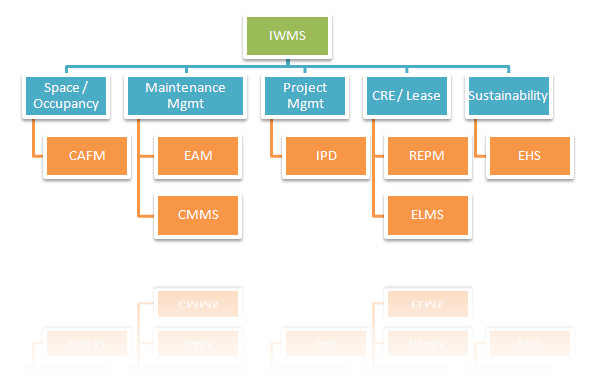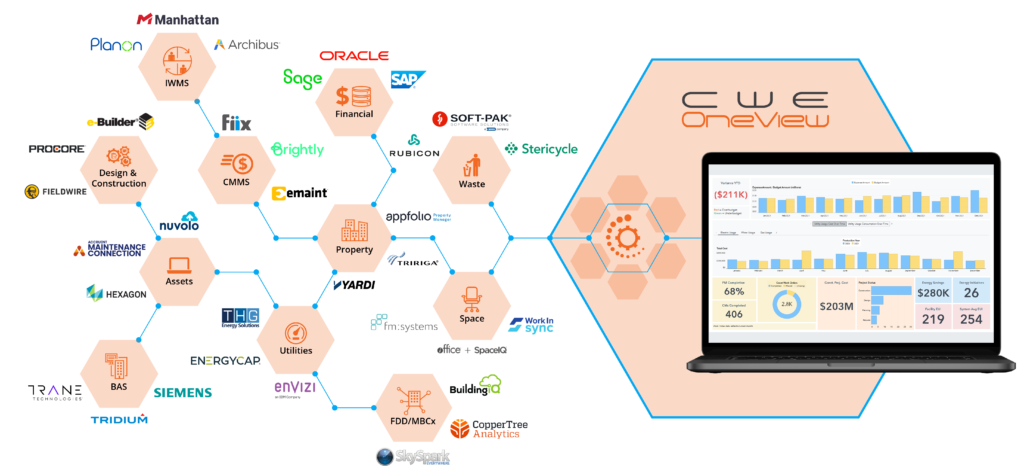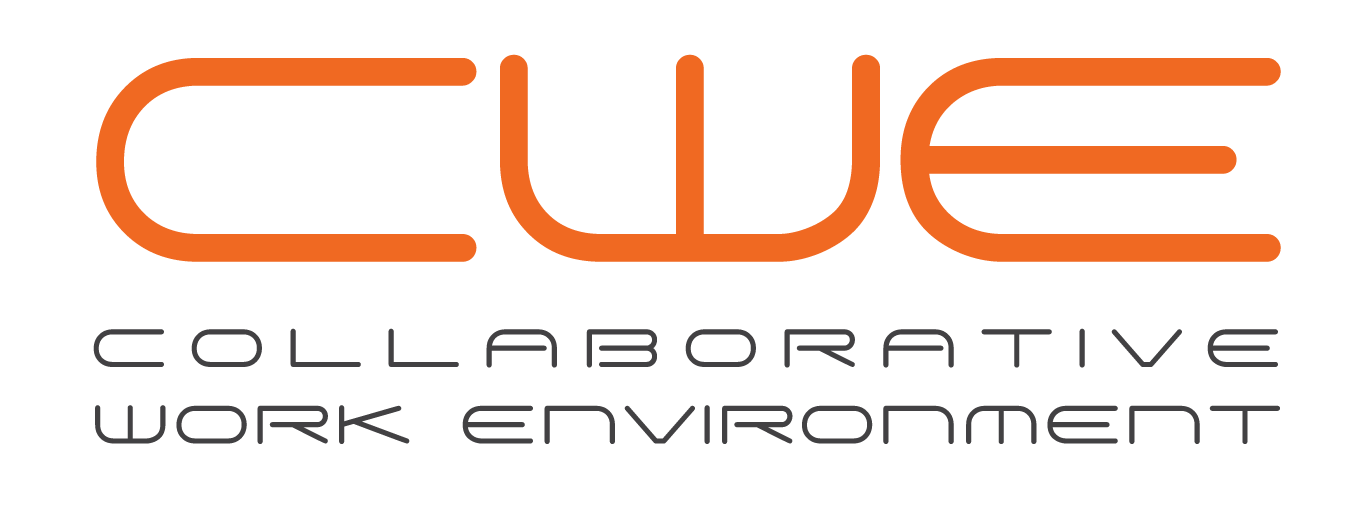Integrated Workplace Management System (IWMS)
An IWMS is a software platform that helps organizations optimize the use of workplace resources, including the management of a company’s real estate portfolio, infrastructure and facilities assets. This system can generally be categorized into five core functional areas:

- Real Estate and Lease Management: Used to manage the real estate assets of a corporation, from acquisition to disposal. This includes lease accounting, planning, request for proposal (RFP) management and tax management.
- Facilities and Space Management: Just like facilities software, this application helps optimize the use of facility space. Users can manage physical spaces within buildings, manage employees and book and schedule rooms. It can also integrate with CAD files and building information modeling software.
- Maintenance Management: Similar to a stand-alone maintenance management system (CMMS), this application is used to schedule preventive maintenance tasks, create work orders, establish predictive maintenance processes, manage spare parts inventory and manage equipment and machinery with asset profiles.
- Environmental Sustainability: Allows users to measure energy usage, track energy-related costs and identify areas of energy waste. This application can often integrate with building management or building automation systems allow users to centrally control various systems throughout a facility, such as air conditioning, lighting or ventilation. to establish benchmarks and analyze energy use.
- Capital Project Management: This application helps with the planning and execution of new building projects or remodels (e.g., new construction or an expansion in an existing office building). It includes functionality for planning, bidding, document management and financial accounting.
Many IWMS providers such as; IBM TRIRIGA, Accruent, Planon, Archibus, and FM Systems have built onto their core platform by acquiring modular companies. This phenomenon has integrated functions of an organization into a single platform where data can be shared and visualized.
Pros: Increased productivity & awareness, reduced labor costs, & optimized use of space and resources
Cons: Disruptive & long implementation, replaces functioning legacy systems, lacks integration, & costly
IWMS systems work well – assuming all the data they need to report on is held within them. This can lead to long implementations and expensive system replacement projects – that often don’t always complete.
Best of Breed Facility Mgmt & Corporate Real Estate Platform
A best of breed platform is a system that takes a different approach than that of an IWMS. This approach is a focused on the data management, integration, and business intelligence tools that overlay these systems.. This allows an organization to augment the systems that are currently functioning effectively and have good user adoption while allowing the selection of strong single-point applications for areas that do not have an effective system in place. This approach allows the platform to report on more than just the five core functional areas of an IWMS

Provides best-of-breed KPI Reports and Executive Dashboards for:
· Real Estate / Property – including all financial reporting
· Space Management – occupancy (including real-time utilization)
· FM / Operations
· Environmental – Utility and Waste Management
· Project Portfolio Management
· Operations / Helpdesk – with self-service for employees and preventive scheduling
· Asset Management
· Document Management
Easy customization and usability through:
· Admin & Security – including role profiles and security
· User configurable reports and dashboards
· Extendible schema – for new data analysis
Easy integration through:
· Interface Management – built in tool (ETL capability)
· Library of proven interfaces
· APIs
Data quality improvement through:
· Quantitative and qualitative reports
The differentiator
Large, global organizations have diverse and complex IT landscapes. They need a solution that:
· Provides executive and operational perspectives
· Covers their entire organization immediately – not after a two to five- year roll-out
· Leverages existing systems and sources (including Excel or other team databases)
A platform that acts as a “capstone” provides extreme flexibility and configuration for any organization. Dashboards, key performance indicators, and attributes can easily be extended to other systems, configured into correct terminology or changed on the spot to ensure the platform is providing the most effective reports. As the platform integrates to the legacy applications it cleanses, identify gaps and standardizes data so that the data in the organization is consistent and accurate.
Pros: Short, non-disruptive implementation, flexible & configurable, low total cost of ownership, increased productivity & decision making, leverage existing investments
Cons: Multiple applications remain in organizations IT architecture



Comments are closed